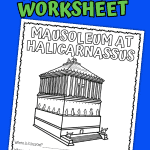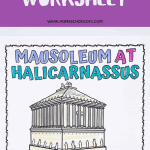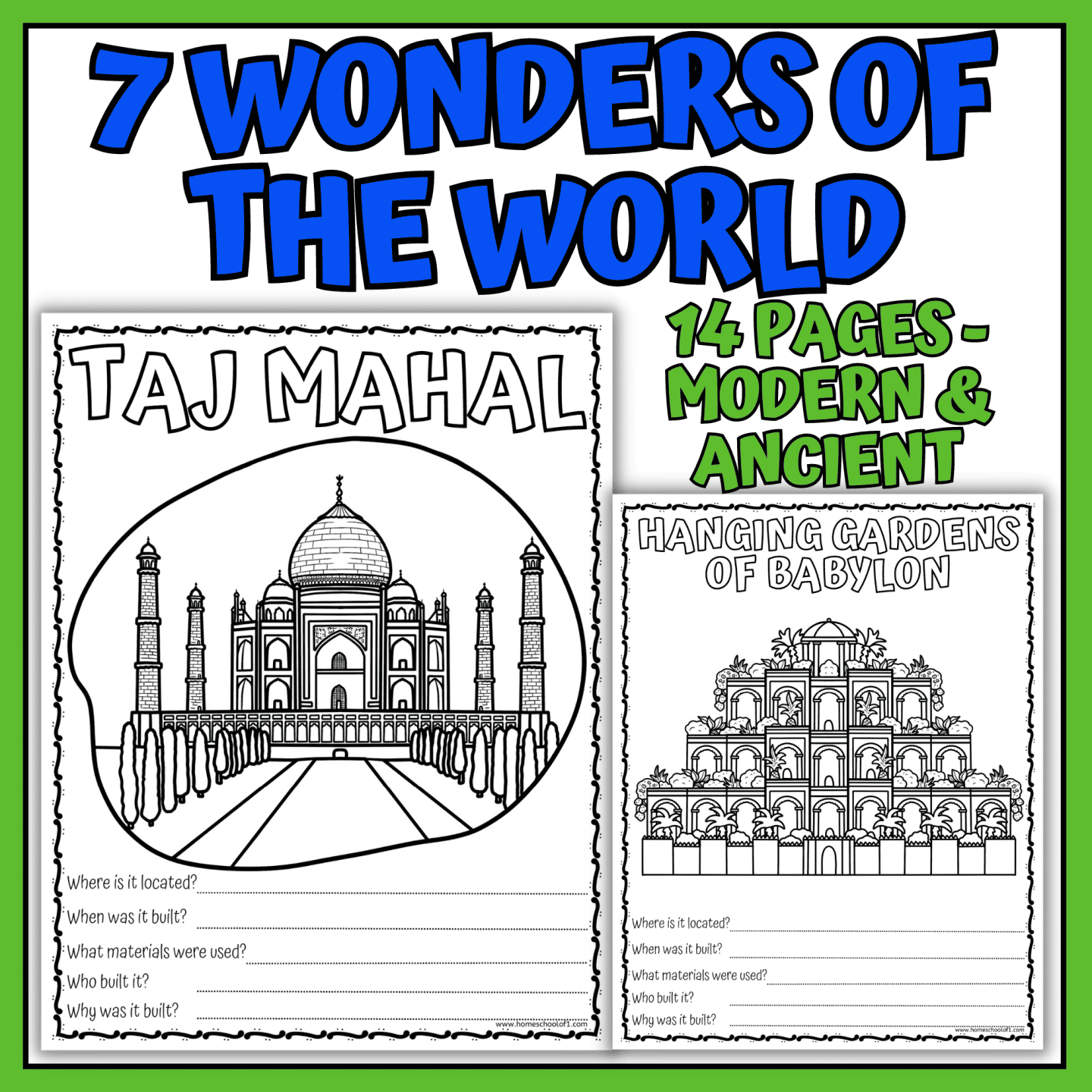Mausoleum at Halicarnassus Worksheet & Fun Facts for Kids
The mausoleum at Halicarnassus worksheet is a great way for kids to learn about one of the Seven Wonders of the Ancient World.
This free geography printable includes fun facts and research questions that highlight the tomb’s history, architecture, and cultural impact. Perfect for blending history and geography in a hands-on format.
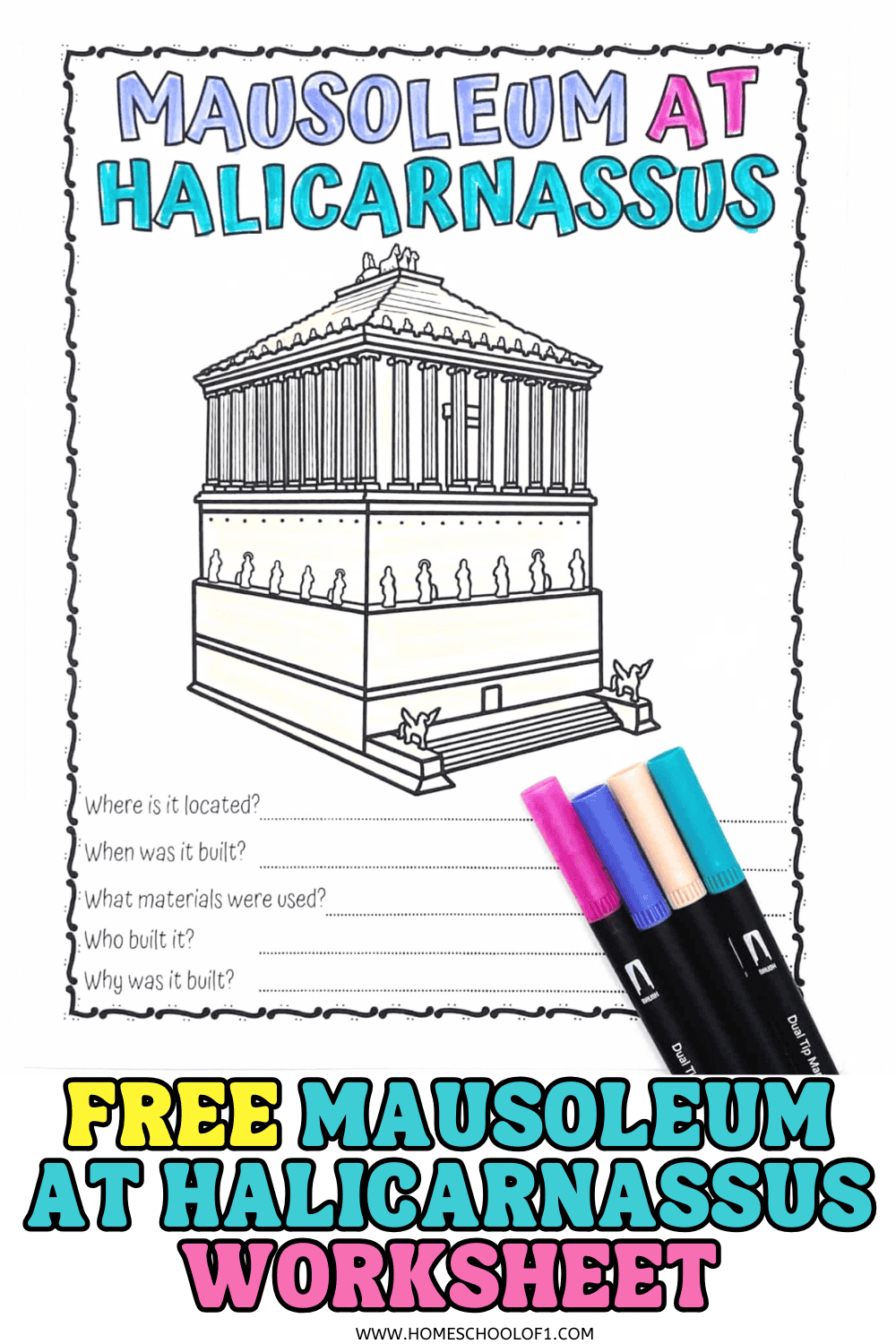
**This post may contain affiliate links. As an Amazon Associate and a participant in other affiliate programs, I earn a commission on qualifying purchases.**
Interesting Mausoleum at Halicarnassus facts for kids
- The Mausoleum at Halicarnassus was one of the Seven Wonders of the Ancient World. It was considered an architectural marvel of its time.
- The mausoleum was built in the city of Halicarnassus (modern-day Bodrum, Turkey) around 353 BC. It was commissioned by Queen Artemisia II of Caria as a tomb for her late husband, King Mausolus.
- The construction of the mausoleum took around 4 years to complete. It was designed by four famous Greek architects: Satyros, Pythius, Timotheus, and Leochares.
- The mausoleum stood at an impressive height of approximately 45 meters, making it one of the tallest structures of its time. It was adorned with intricate sculptures and reliefs.
- The structure was built in a unique architectural style known as the “Halicarnassian style.” It combined elements of Greek, Persian, and Egyptian architecture.
- The mausoleum was decorated with beautiful statues and friezes, depicting scenes from Greek mythology, battles, and everyday life.
- The word “mausoleum” actually originated from the name of this ancient tomb. After the Mausoleum at Halicarnassus was built, grand tombs and burial monuments came to be known as “mausoleums” in honor of its magnificence.
- The mausoleum stood for over 16 centuries until it was destroyed by a series of earthquakes in the 12th and 15th centuries. Today, only fragments of the original structure remain.
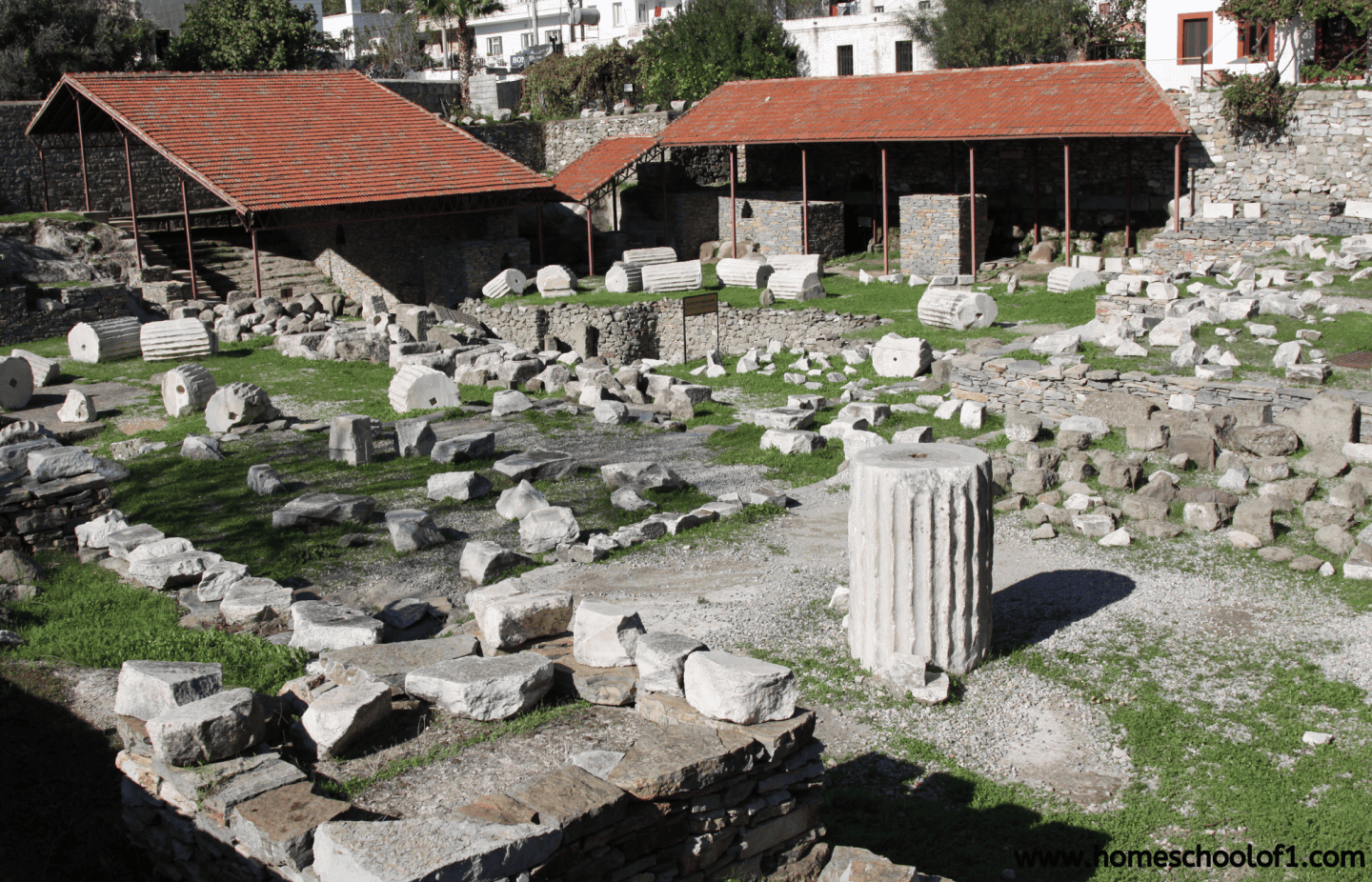
Mausoleum at Halicarnassus research
The Mausoleum at Halicarnassus was one of the most famous tombs in history, and kids can learn all about it with this worksheet.
They’ll read a few key facts, color the scene, and answer questions about who built it, why it was important, and what’s left of it today.
These are the questions on the Mausoleum at Halicarnassus research paper:
Where was it located?
The Mausoleum was located in the city of Halicarnassus, which is present-day Bodrum in Turkey.
When was it built?
The Mausoleum was built around 353 BC, so it was constructed over 2,300 years ago.
What materials were used in making it?
Various materials were used in the construction of the Mausoleum. The base and lower sections of the structure were made of marble. While the upper levels featured a combination of marble and limestone. Elaborate sculptures and reliefs were also created using marble.
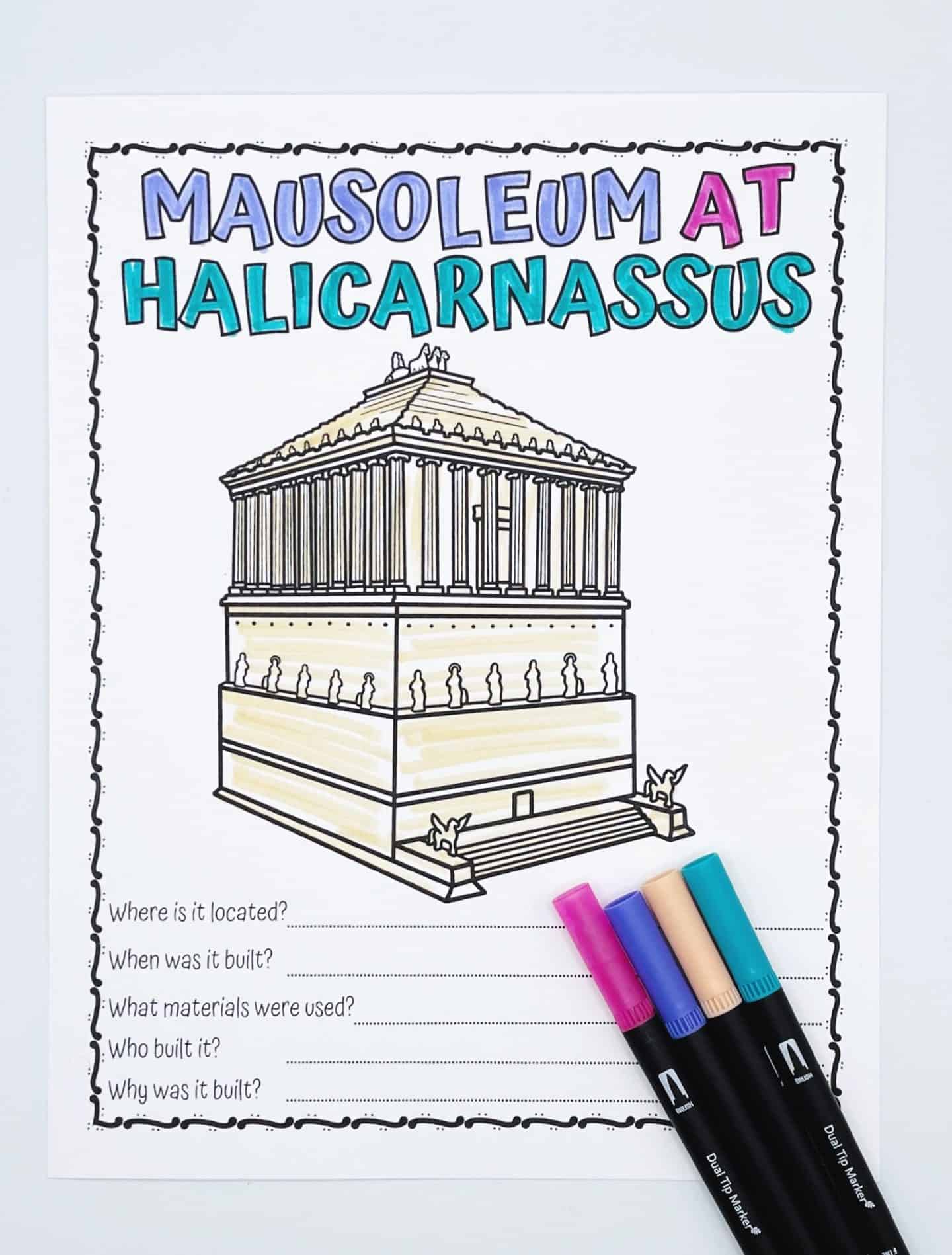
Who built it?
The Mausoleum was built under the commission of Queen Artemisia II of Caria as a tomb for her late husband, King Mausolus. The construction was overseen by four renowned Greek architects named Satyros, Pythius, Timotheus, and Leochares.
Why was it built?
The Mausoleum was built to serve as a grand tomb for King Mausolus. It was intended to honor his memory. And showcase the wealth, power, and artistic achievements of the city of Halicarnassus and the Carian Kingdom.
Keep exploring with our free continent of Europe worksheets—perfect for learning more about geography, landmarks, and European culture.
What happened to the Mausoleum of Halicarnassus?
It met a series of unfortunate events that led to its eventual destruction. Here is a summary of what happened:
- Over the centuries, the region where the it was located experienced several earthquakes. The most significant damage to the structure occurred during earthquakes in the 12th and 15th centuries.
- The remains of the mausoleum were gradually dismantled and the stones were repurposed for other buildings in the area. The site was left in ruins.
- Over time, the memory of the mausoleum faded, and its location was lost. Eventually, the ruins were buried under layers of soil and debris, further concealing its existence.
- In the early 19th century, a British archaeologist named Charles Thomas Newton conducted excavations in the city of Bodrum (formerly Halicarnassus). And identified the site of the Mausoleum at Halicarnassus. Fragments of the sculptures and architectural pieces were found during the excavations.
- Many of the surviving sculptures and architectural fragments from the mausoleum were taken by various individuals and institutions over the years. Today, some of these pieces can be found in the British Museum in London.
Get the free Mausoleum of Halicarnassus worksheet here!
If you’re studying the wonders of the world, you can get all 14 worksheets—covering both the ancient and new wonders—for a small fee.
If you don’t see the form below, click here to get the free Mausoleum of Halicarnassus coloring page.
Last Updated on 23 October 2025 by Clare Brown

